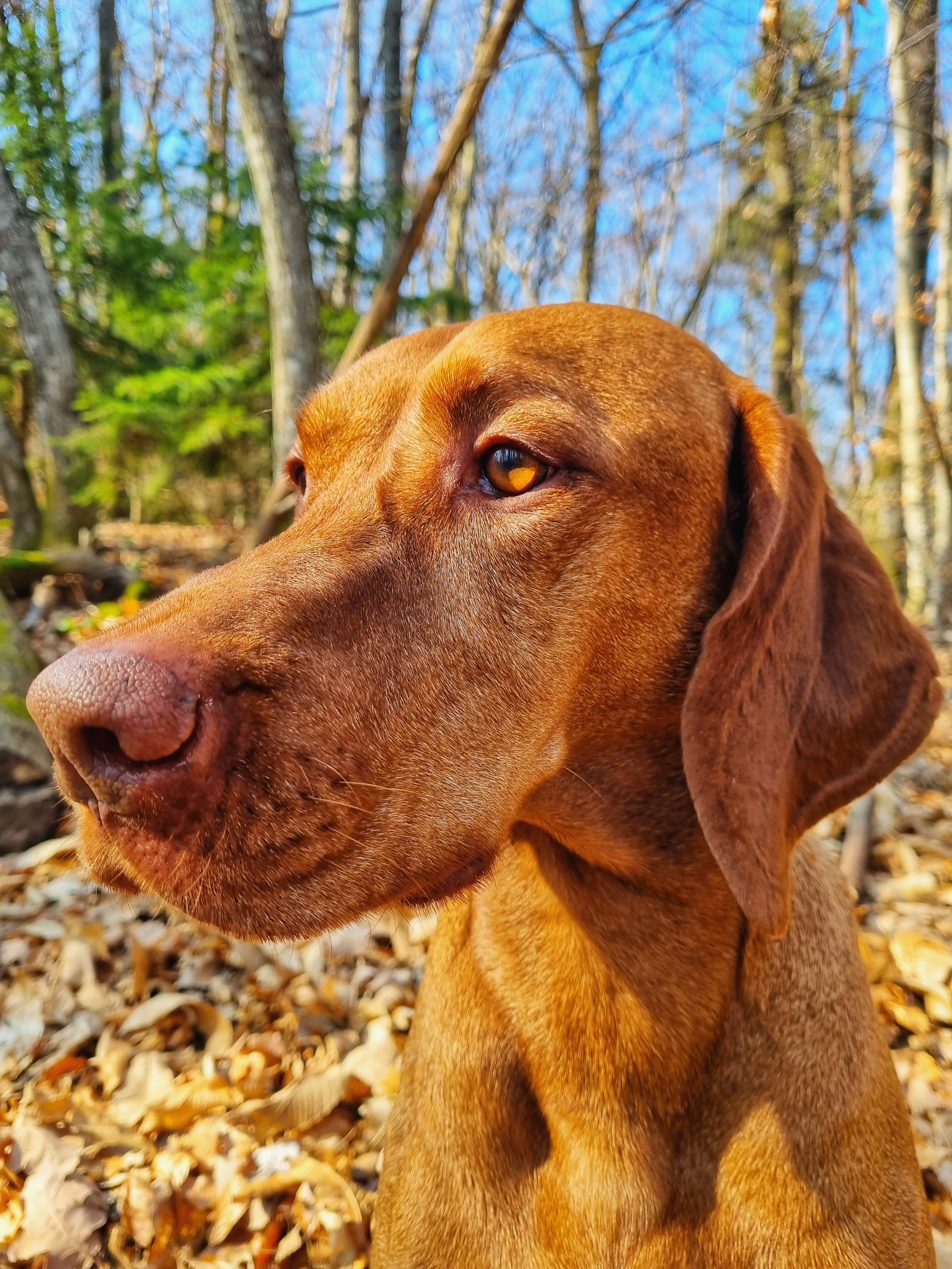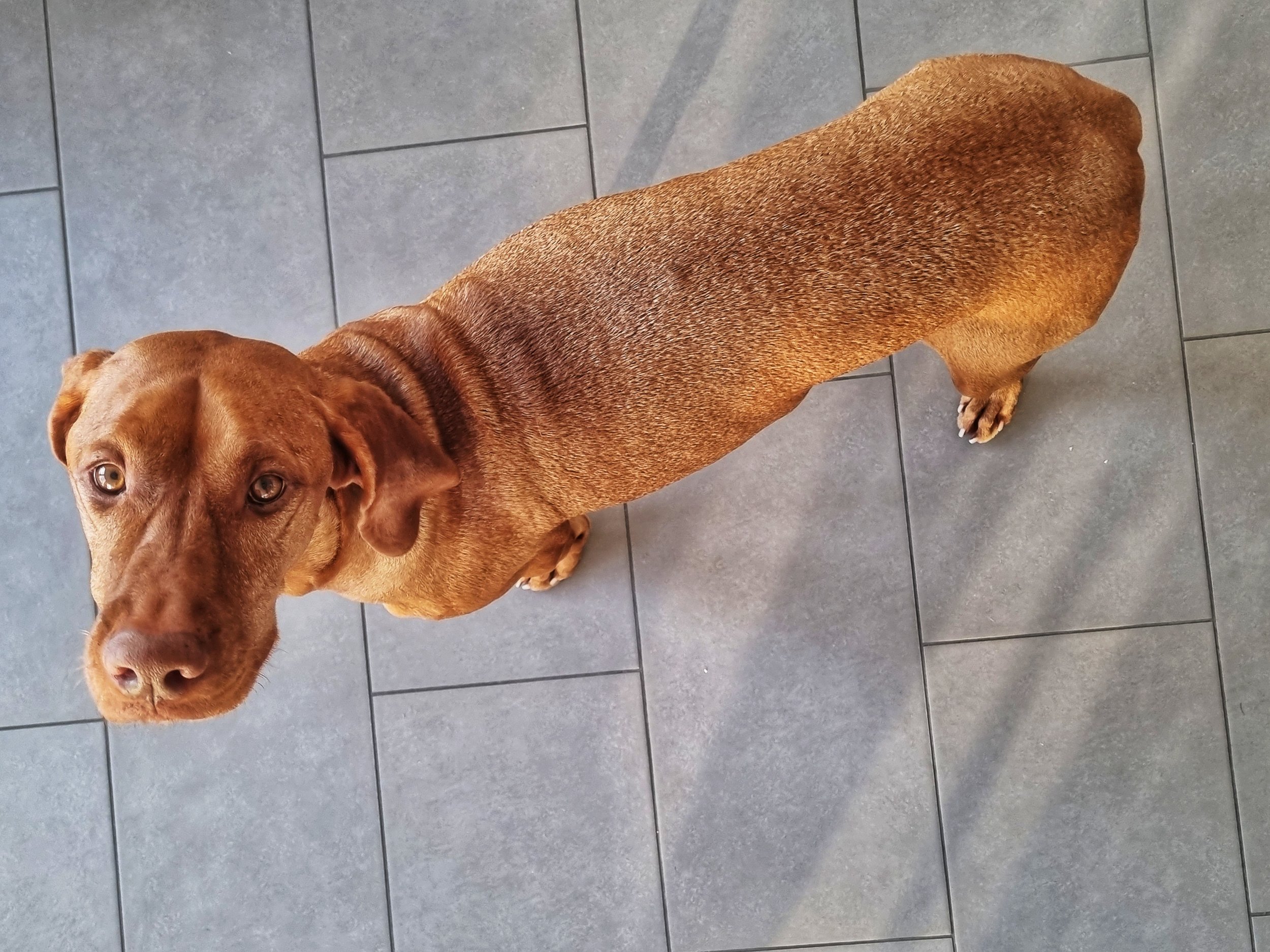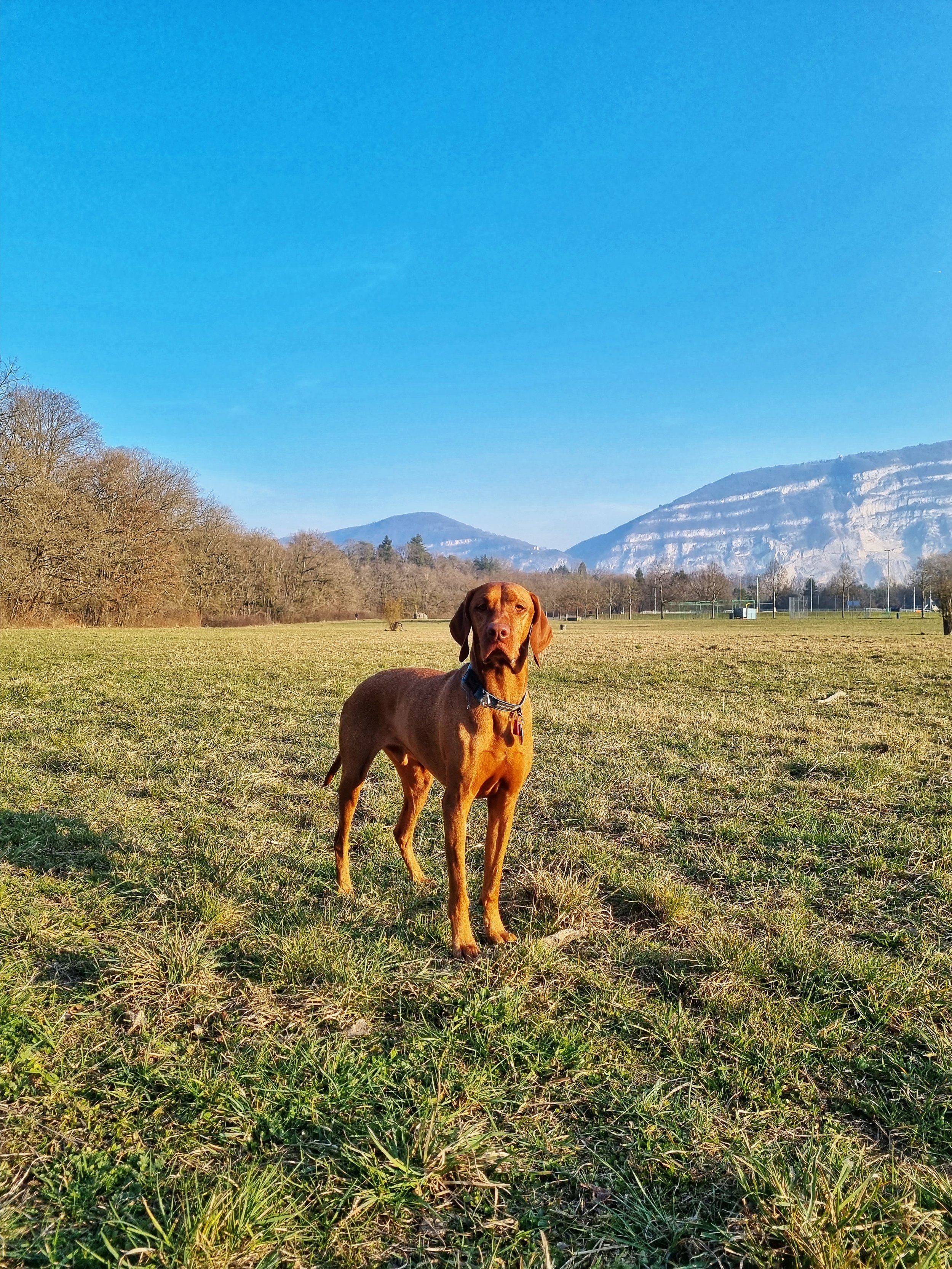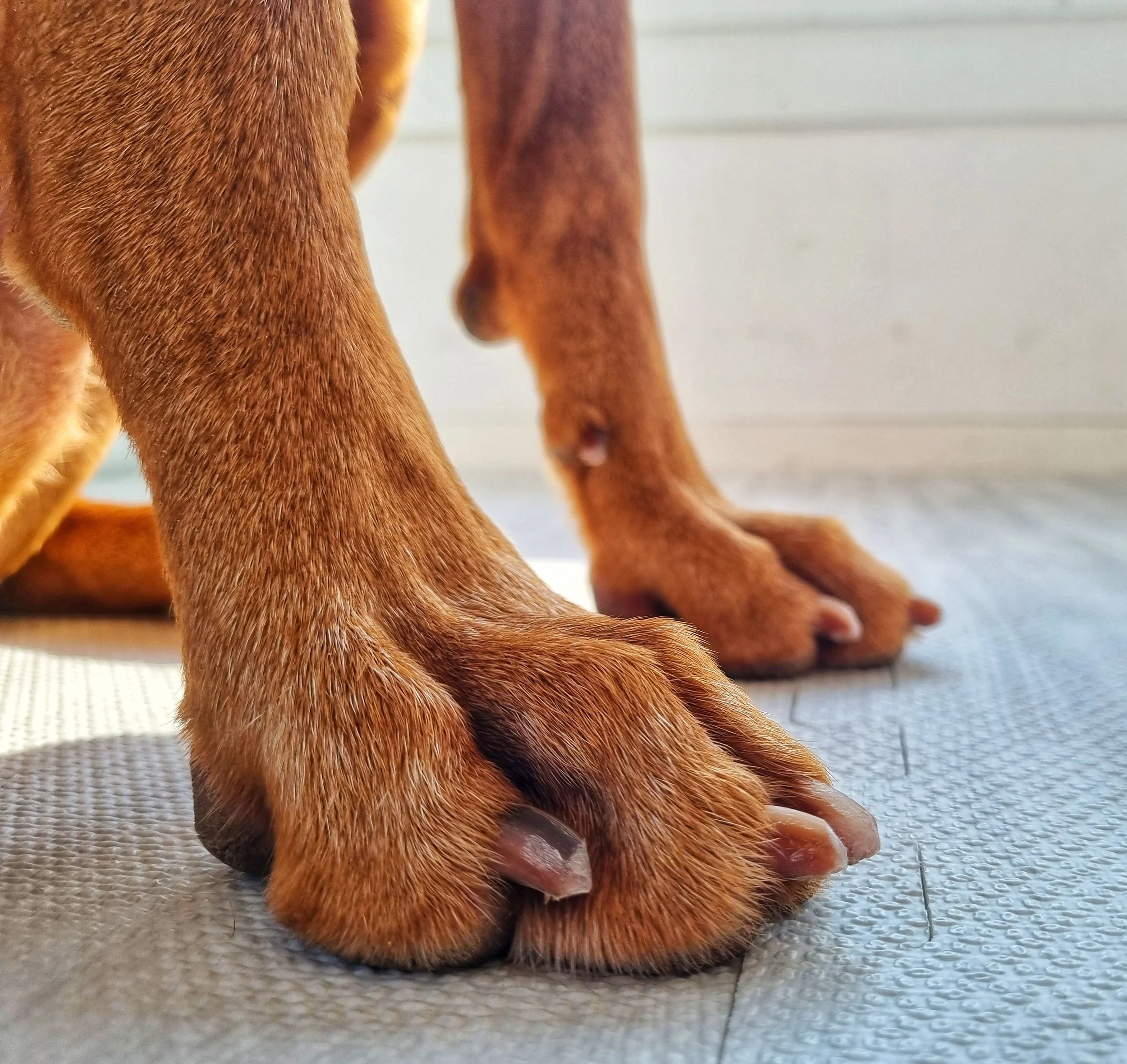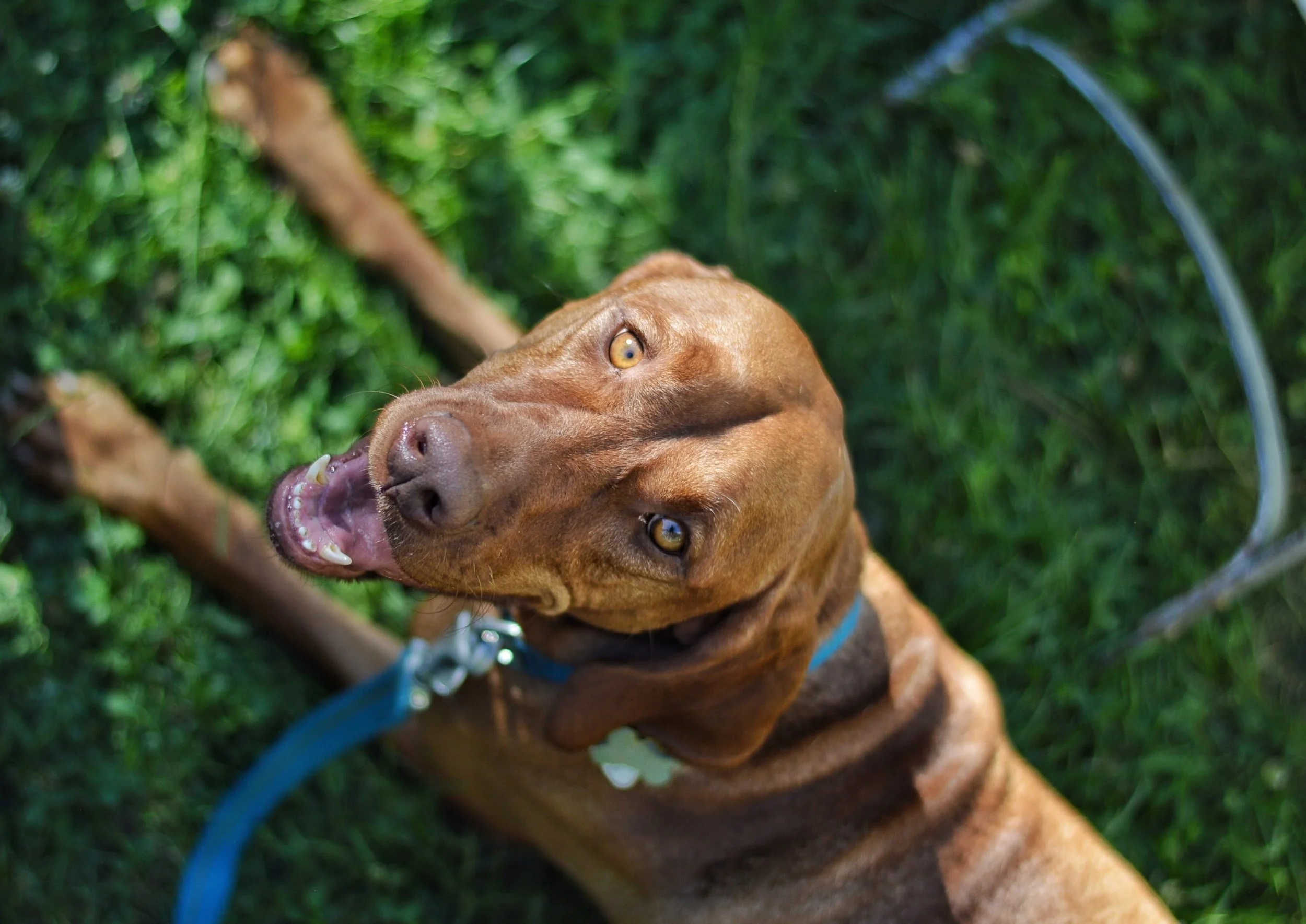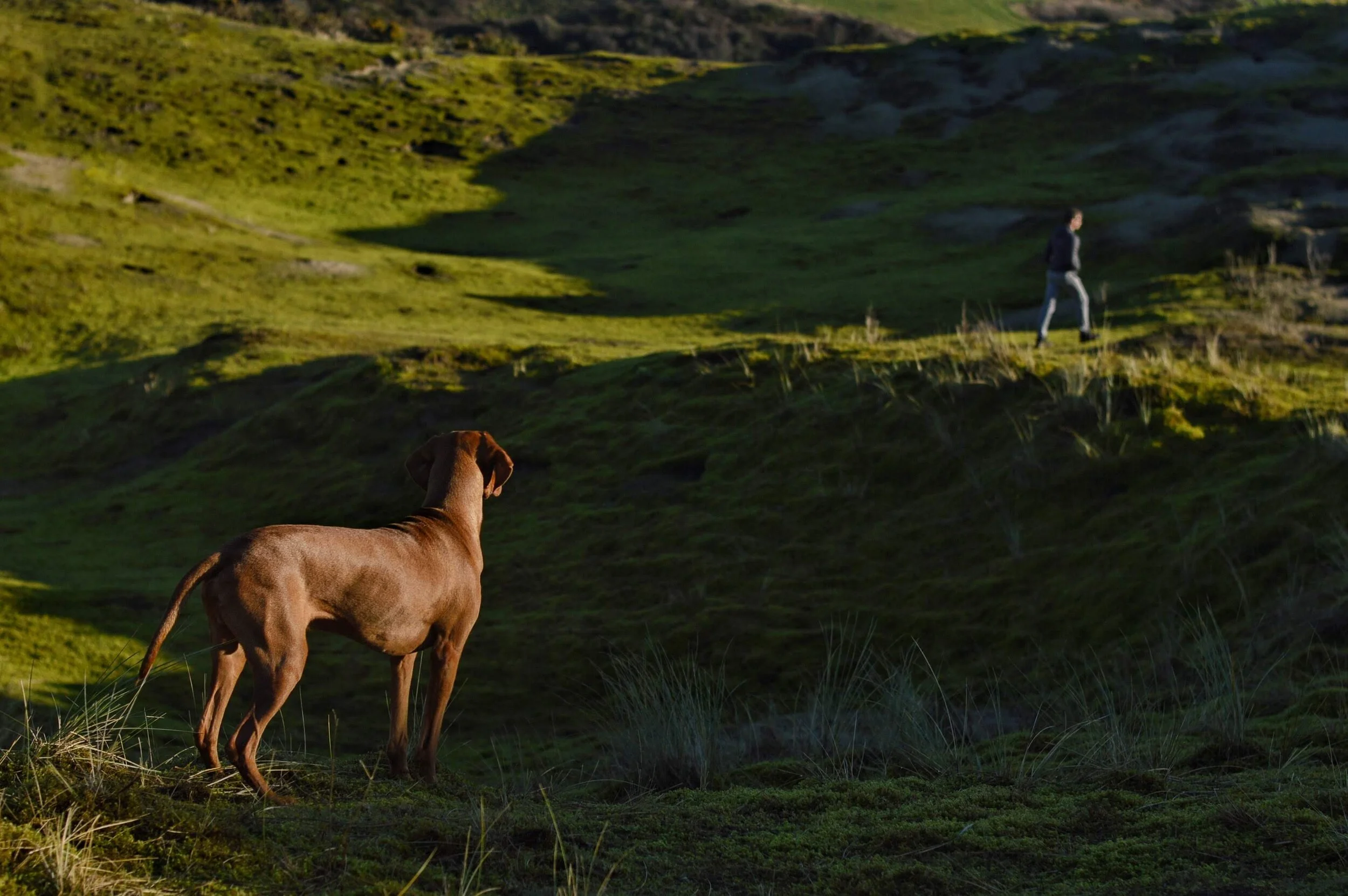Doggy Maintenance, Luka's health and beauty regime
One of the most unexpected things about owning a dog, is the amount of health maintenance they require. One of the key reasons we decided to get a Vizsla was because they are generally healthy dogs with no particular susceptibility to hereditary diseases, no special maintenance requirements and they have short fur for low grooming needs.
While all of those things are true, I feel like I still spend an awful lot of time keeping Luka healthy (and beautiful!)
In this post, I talk through all of Luka’s maintenance in order of regularity in which I do them. There are of course some particularities because of Luka’s breed, and there are certain things that do not apply to us for example around grooming, because Luka is a short-haired single-coated breed, however in general terms I would say what I discuss here applies to all dogs universally.
Please note that this post talks about how I feel it is best to take care of my dog based on my own research and experience. I am not writing this blog post to convince you to do things this way, or that what you do or don’t do for your dog currently is appropriate. Much like parenting human children, your approach and philosophy is personal to you and based on the circumstances and character you are dealing with. You know your dog best, and ultimately you are the only person that knows what your dog needs. If you are unsure as to how best to care for your dog, please consult a veterinarian whom you trust. Of course if your dog has any particular medical needs, the best person to talk to is your vet.
I have no affiliation with any of the products mentioned in this blog, I don’t get any commission or kickback from any of the products mentioned being purchased. I just want to share brands and products that I have found to be good for Luka. Please note I cannot be held liable for any supposed benefits or side effects from using any of the mentioned products should you wish to purchase them.
Nutrition
What does a dog eat?
For some of you the question might be more like what doesn’t a dog eat??!!! But in all seriousness the food your dog eats is THE most confusing yet important factor, I believe, in your dog’s health.
Canine nutrition is a topic where more and more information and awareness is being shared thanks to the internet and social media. I’ve also read a few books (which does not make me qualified to advise anyone in any way) on canine nutrition and my position is as follows: much like humans, variety and fresh unprocessed whole foods is best for our dogs. Where it can get confusing is, which diet is most appropriate for dogs? This is a hotly debated topic; some people claim that you should feed dogs like wolves i.e. on whole raw meats only. Some people give their dogs a vegetarian diet. Some people prefer grain-free diets for their dogs. Others feed a home cooked meat and vegetables based diet.
Based on what I have read and my experience, dogs do best on somewhere between a solely carnivorous or solely vegetarian diet, and they lean more towards needing a protein-focussed diet rather than a vegetarian or herbivorous diet.
For a long time I fed Luka a raw diet. Meaning he ate mainly raw meat, organs and bones along with some fresh fruits/vegetables. It’s a diet also known as BARF, which is an acronym for Biologically Appropriate Raw Food. This diet is becoming much more widely adopted and you can easily find commercially created raw meals in the freezer section of pet stores even in Switzerland these days. (Watch out for the balance of meat to bones to vegetables though, there is a big disparity between brands!)
BARF is a diet that has been known to sustain long-lasting and healthy lives for many dogs. However, I can tell you from experience that doing BARF appropriately for your dog is a lot of hard work, because everything needs to be weighed and portioned based on your dog’s age and weight. All dogs need somewhere in the region of 80% muscle meat, 10% bones and 5% Liver and 5% other offal. Puppies need proportionately more food per weight than adult dogs. Additionally if you make your own food for your dog, then you also would need to supplement with vegetables and fruits, as well as other micronutrients such as Omegas 3 and 6, and other vitamins and minerals. Also, you want to be feeding your dog a variety of meats from different animals. For example, you don’t want to solely feed your dog chicken meat and bones all of its life, you want to aim for at least 5 different types of animals as a regular source of food for your dog. Dogs benefit from eating fish as humans do, but avoid feeding too much large fish such as tuna, due to mercury levels. (exactly like humans, in fact)
I prepared everything myself when I didn’t have kids. Back then, I had the time and willingness to go around to local abattoirs/chicken factories/butchers to source the foods, then weigh and portion them into Tupperwares every few weeks. If you go down this route, then you would definitely need to invest in a freezer to store all the meat, because certainly if you have a big active dog like Luka who weighs 27kg, then he’s going to be eating 700g or so of meat every day. When I had the time, I enjoyed making raw food for Luka because it meant I was constantly keeping an eye on his body condition i.e. weight, and adjusting his food and being conscious of giving him a varied diet. I did feel unsure about giving him everything he needed for a long and healthy life so I did read a lot online and a vet who was supportive of BARF (a rarity, certainly in Switzerland!) introduced me to the University of Zurich. The Animal University of Zurich offers a nutritional consultation for your dog which I did solicit, and they were happy with what I was feeding Luka. They advised a couple of things to consider to supplement his diet, which was pretty simple, like putting chopped apple, fennel and carrots to his meat. If you want to embark on raw feeding your dog and want reassurance that what you’re feeding is nutritionally complete, I can recommend the nutrition team at the University of Zurich. I paid CHF250 in 2017 for a remote consultation.
Luka put on weight last year, about 3kg in fact! Finally lost it, looking good at his fighting weight again, could even do with being a tiny bit leaner
I do read of lot of articles and watch videos published by Dr Karen Becker who is a US based holistic vet, and other like her who are very well established, such as Dr Peter Tobias . They share a lot of knowledge to do with natural health for our dogs.
What about commercially available dog food?
Since having children I don’t have the time or inclination to raw feed, and I find commercially available raw foods in Switzerland expensive and also not quite the right proportions of bone : organ meat : muscle meat so I have switched Luka over to what I consider to be the next best commercially available dog food which is Platinum. This is actually a brand that is quite popular with raw feeders when they can’t give raw food i.e. travelling on holidays etc because they air-dry their food and use human grade ingredients.
I give Luka a mix of their semi-dry kibble and wet food. I still like to supplement him with frozen chicken legs / carcass or frozen sardines just to give him a wholesome unprocessed snack. I also own a dehydrator, so when time allows, I make dehydrated liver for him which is very rich so I only give him tiny pieces as a treat, but is a great source of vitamins for dogs.
So even if raw feeding isn’t for you, there are plenty of alternative products in the market. There are dehydrated raw foods, tinned wet foods, dry kibble, semi-dry kibble and home cooked foods. Kibble tends to be the most convenient, commercially available and best value for money. If this is the route you choose, then you can look at some dog food comparison sites to identify the most easily accessible and affordable commercially available dry/wet food for your dog through sites such as All About Dog Food and Dog Food Advisor. (Note that these websites are either UK or US based, so don’t include some of the local Swiss brands, so you will just have to look at the ingredients lists yourself)
Just know that being grain-free or extremely high protein (70%+) isn’t necessarily best for your dog. I had Luka on Orijen which tends to rank quite highly on these kinds of websites, but at 70% protein, he had horrendous digestive problems. Raw meat is actually more like 19-25% protein because the rest is mostly water and a little bit of fat so don’t always think that higher protein content (and higher price tag) is better for your dog.
The other important factor to bear in mind with nutrition is keeping an eye on the weight of your dog. Dog’s should be lean, with no fat covering their ribs. You should clearly be able to see their hip bones. You should be able to see a tuck at their waist if you looked at them from above. Dogs these days have been plagued with the same lifestyle diseases that humans suffer from, including diabetes, cardiovascular issues and pancreatic diseases. Similarly to humans, being chronically overweight also leads to joint problems, and research has shown that obesity in dogs significantly reduces their life expectancy, as much as 2.5 years.
What I feed in the case of spontaneous digestive upsets
All of the above being said, my go-to protocol for an upset stomach i.e. diarrhoea is the following:
1) Feed boiled rice with chicken or turkey breasts and carrots (easy to digest, the rice and carrots firm up the poo) until symptoms pass. If I have any, I also add a little boiled pumpkin to help firm things up.
2) Add Forti-Flora probiotic for dogs to his food until symptoms pass. This product is easily found at any vet’s practice or online. If you can’t get hold of this, then kefir, cottage cheese or even natural yogurt will help some ways to rebuild their gut flora.
3) Try to keep your dog hydrated. Dropping a few drops of olive oil into the water normally motivates the dog to drink a bit. Keep an eye on their gums to know their state of hydration.
If your dog’s symptoms don’t improve or is vomiting without being able to keep food or water down for 24 hours, then I would be rushing the dog to the vet’s.
Foods that are dangerous to your dog
Whilst dogs adapted by eating scraps from humans, there are certain foods that will be extremely dangerous for your dog to consume. They include:
Chocolate
Raisins and grapes
Xylitol (can be found in jams, chewing gums, commercial peanut butter)
Onions
Alcohol
Caffeine
Macadamia nuts
Salt (in large amounts will induce vomiting)
Poppy seeds
Cooked bones (whilst bones are safe in themselves, cooked bones present an increased risk of splintering and causing a risk of obstruction/piercing in the digestive tract)
Teeth
Dogs, like humans, should brush their teeth every day. However unlike humans, dogs can’t properly brush their own teeth, so it falls on the human to do this job.
In my experience, oral hygiene in dogs is THE most neglected area of health maintenance by owners. This is fine when the dog is young, however as they age, the teeth start to deteriorate massively, accumulating more and more tartar. This almost always ends up needing surgical intervention whereby the teeth need to be pulled out under general anaesthetic. (It’s extremely rare to perform a root canal on dogs, so generally it’s bye bye teeth!). Even if your dog’s teeth don’t need to be pulled out, most of the time they would still need to be put under to give their teeth a good scaling by the vet. Any general anaesthetic presents a risk of death (not to mention the associated costs) so if you are able to keep your dog’s teeth clean and thus keep him out of the operating theatre, then it is surely worthwhile.
Additionally neglected teeth can cause gum disease which causes an infection to travel to other parts of the dog’s body, so ultimately a problem that starts with teeth can end up having knock-on effects.
There are various products on the market that claim they clean your dog’s teeth, or self-cleaning toys that supposedly clean the teeth as a dog chews on it. However research has proven that by far the best way to keep your dog’s teeth clean and healthy is by manually brushing them daily.
I use a human toothbrush and make up my own toothpaste for Luka, which is simply Coconut Oil mixed with food grade bicarbonate of soda which helps with abrasive action on the surface of the tooth. I aim to do this daily though in reality it happens about 4 times a week.
Every few weeks to once a month I also scale Luka’s teeth with a specialised scaler myself to really get the stubborn tartar off, however I wouldn’t recommend this unless you are certain your dog will stay still for you as there is a risk you will cut into their gum in the process, causing them injury.
The other benefit of regularly cleaning your dog’s teeth is you will quickly find any foreign bodies or signs of infection. I have pulled out grass seeds from inside his cheek thanks to one of my regular tooth brushing sessions with him. Ticks have also been known to burrow inside the mouth, so it is good practice to be looking inside your dog’s mouth regularly.
A good product to keep your dog’s teeth from building up too much tartar quickly is Plaque Off, which you simply mix into your dog’s food. Since using this product I find the tartar to be much easier to take off when scaling Luka’s teeth. Although note that I still do have to brush and scale his teeth as I do see tartar build up. It’s best thought of as a supplement to maintain good oral hygiene, rather than a replacement to actually brushing teeth.
Nails
Nails are a big topic for me. Since I had a lot to say about nail maintenance I decided to split this topic into its own separate post, since it also involved talking about the desensitisation process I went through with Luka to be able to trim his nails in a stress-free manner.
For many dog owners, nails are not something that requires active and regular attention. (apart from dew claws, since they are never in contact with the ground so will grow continuously.) To know whether or not your dog’s nails need attention is to see whether the nails are in contact with the ground when the dog is standing. The gold standard is to have no clicking when the dog walks on hard surfaces, though this is sometimes impossible depending on the shape of your dog’s paws.
Many dogs may have absolutely no problem with having their nails clipped. If this is the case for you, lucky you and keep up the good work on maintaining those nails!
However for a good many of us, our dogs may have a huge aversion to having their nails clipped, and require active maintenance regularly. I was one of those owners who had a dog with fast growing nails AND had an absolute phobia of nail clipping due to having the quick cut once too many times (sorry, Luka!!). If this is the case for you, then desensitisation to nail trimming is the only way to be able to carry out this procedure with minimal stress on your dog. It sounds simple, but it can be a long process!
In some ways this experience of learning to work with the dog you have and making myself work at Luka’s pace has been a life changing experience. I talk about what Positive Reinforcement is, and the steps I took over a 10 month period to get Luka to a place where I could trim all of his nails in one sitting in this separate post.
Ears
Being a floppy-eared dog who likes to swim, Luka’s ears take a bit more maintenance than you would think. After a swim, I always clean them in the evening.
During the colder months where he doesn’t swim as much, I still give his ears a deep clean every two weeks. If I don’t do this, his ears start to smell yeasty and ear wax starts to build up. I operate on the basis of proactive maintenance when it comes to ears, rather than doing nothing then dealing with an ear infection which will likely end up requiring a visit to the vet’s. I think this is a must do maintenance for any dog owner who has floppy eared-dogs. Moisture and warmth builds up due to the ears being closed over, so makes for a ripe breeding ground for bacteria and yeast.
My go-to product for ear-cleaning is Epi-Otic by Virbac. They are readily available at any veterinarian surgery or online.
You fill the dog’s ear with this liquid, and then hold their nose down towards the ground to allow the liquid to travel down their ear canal which is comprised of a vertical section, which then bends in a long horizontal section running along their muzzle. Whilst gently holding their nose down towards the ground, massage the base of the ear for a minute or so to allow the liquid to run down the ear canal. Then let go at which point the dog will shake and clear out the ear by himself! You can wipe away any excess solution left with a cotton ball or tissue. It can be quite a messy job so I wouldn’t recommend doing this near anyone eating or near children’s play areas, for example.
Mercifully Luka is tolerant of me doing this, but he does sometimes hide in the bathroom if he sees me bringing out the ear-cleaning paraphernalia!
If your dog doesn’t like getting its ears cleaned, then you can do the desensitisation process as per the Nail Maintenance blog post. It’s a good idea also to change the place that you do ear cleaning in this case, because your dog probably has associated anxiety with a particular place to get its ears cleaned.
Eyes
Whilst I don’t do anything in particular for his eyes on a daily basis, I do wipe his eye bogeys away when I see them and keep a general eye (!) on his eyes. If they look red, but the eyes are not producing any yellow or green secretions, then I simply take a cup of cooled down chamomile tea and dip a tissue into it (or use a sterilised medicine dropper) and squeeze a few drops of the tea into his eyes. Chamomile has a calming effect, and is very effective.
If the eyes don’t improve, or starting to look infected, producing yellow secretions, then I use colloidal silver which I bought from the pharmacy (the one I have is concentrated to 23ppm) and put a few drops into his eyes. Colloidal Silver is a powerful antimicrobial and to date I’ve been able to successfully treat any minor eye infections without having to take him to the vet. In fact Colloidal Silver can be effective in other external wounds.
Of course you should consult a vet if you are concerned by anything or if the symptoms are getting worse. Here I am talking about minor red eyes or a very minor infection. Some dog breeds are prone to cherry eye, which is where the third eyelid gets infected and swells up. This will definitely not go away by itself, so a vet visit would be required. Also any aggressive looking eye infections will need medical intervention. Eyes are important, so anything that looks more than a little off will definitely require an immediate visit to the vet’s.
Tick/Flea Prevention
The general advice is to give your dog tick and flea prevention year-round. The thing about this kind of treatment is that they are essentially insecticides that you are putting in/on your dog. This isn’t great for your dog, and actually the spot-on types can be really harmful to aquatic life if your dog likes to swim as the product then dissolves into water.
Given that my philosophy is not to oversubscribe to chemical treatments, outside of high tick season I simply spray Luka with a home made spray which give some protection. There are a number of recipes which you can find online, using a mix ranging from Apple Cider Vinegar, coconut oil to Essential Oils (be careful, as some Essential Oils are toxic to dogs so research your recipe!) However, natural remedies I find are limited in efficacy and I’m keen to keep Luka and my family safe from diseases so during high tick season, or if I know I will be spending a lot of time in the countryside in high grass, I give Luka Nexgard which is a chewable tablet. They are valid for a month and I give it to him between April and September. I do draw out the frequency of the tablets during this time, so in reality I’m giving him the tablet every 5-6 weeks probably. There is a new product which has come on the market recently called Bravecto which is a chewable tablet valid for 3 months, but it seems this is so strong that it makes your dog quite unwell (causing seizures, organ failures and even death) and some people even claim it really causes long term damage to their dogs however there is currently not enough research to back this claim.
Addendum on 31st March 2022, an independant research was published looking at the rate of adverse events on dogs who were treated with Bravecto/Nexgard/Simpirica. This research showed there are death and side effects noted in some proportion of dogs treated with these products. To assess whether you feel this is something you are comfortable treating your dog with, you can read the full paper here.
Picture of an adult tick on the left and nymph tick on the right
All of this doesn’t mean that I don’t give Luka a good check over after walks in the countryside, because the best approach for tick borne diseases is to find them and remove them as soon as you can. It’s thought that ticks can’t pass on Lyme’s disease if you remove the tick within 36 hours of it latching onto you or your pet. So ultimately, the best prevention is vigilance. Do make sure you own a tick remover, because if you spend any time in nature, you or your dog are liable to pick up ticks and you want to remove them as soon as possible. When you do find them, either crawling around or latched on, they are very persistent and hardy, so you can’t just flush them down the toilet, be sure to completely squash or burn them to ensure they’re really dead!
The other thing I should share is that healthy dogs don’t get infected as easily by tick borne diseases. I have done some research over the years into Lyme’s Disease and there’s a reason that vets don’t routinely screen for Lyme’s disease in dogs; healthy dogs can be infected and stay perfectly healthy. So can some humans, in fact. So this is one of the reasons I try to minimally vaccinate and worm/treat Luka for Ticks and focus on good nutrition because all of those things done regularly bombard the immune system meaning his body can't necessarily fight diseases effectively if needed.
Worming
The general advice your vet will give you is to worm your dog every 3 months. Before Brexit I had Luka’s stool tested for worms by a UK based laboratory rather than worming him routinely.
However in reality it’s quite a loborious process to collect stool samples then get them sent off to the UK and so more recently I have just been worming Luka a couple of times a year. If you have a dog who scavenges a lot or likes to eat animal poo, then it’s probably a good idea to screen them or worm them every 3 months. If you have children, a dog infected with worms can easily pass it to your children so regular worming/screening is definitely a must do.
Personally I have only ever used Milbemax, which is a broad spectrum de-wormer that Luka takes easily and doesn’t cause him problems.
Grooming
You’re probably surprised to see this section for Luka. Vizslas are single-coated, meaning that they don’t have a fluffy undercoat that sheds. However, they shed more than you think of their top coat every Spring and Autumn. It’s manageable without brushing, however if I find myself annoyed with the amount of tiny red hairs all over my clothes and sofa, then I will give him a brush with the Furminator which is kind of like a rake for dog hairs. I have more recently bought a grooming mitten because Luka doesn’t seem to appreciate the Furminator so much, but to be honest I haven’t used it yet!
As far as shampooing and bathing goes, I almost never bathe Luka. I couldn’t even tell you the last time I bathed him head to tail. Luckily being single-coated, he doesn’t have a doggy smell, so unless he rolls in something smelly, I never have a need to wash him. I prefer not to bathe him where possible in order to maintain the natural balance of oils on the skin and fur. I used to have a Labrador and I did remember washing her frequently as she would get very smelly after a while. I do however rinse his paws and stomach down after walks to get mud and/or sand off him, almost on a daily basis.
Vaccinations and Titre Tests
This is a very controversial topic. I would like to establish upfront that I am by no means anti-vaxx and my children are fully vaccinated. I have just taken the position that over-vaccinating is more harmful than good in the case of dogs, especially given that most vet practices still advocate a yearly vaccination programme here in Switzerland. Other Western countries advocate a 3 yearly vaccination programme, which is a much more modern approach to preventative medicine.
This means I will vaccinate Luka on a needs basis. Essentially I will I vaccinate him against Leptospirosis most years because we are in the countryside a lot where he is likely to come into contact with this bacteria. Additionally Lepto can be deadly for your dog, plus it is zoonotic meaning that it can pass from your pet to humans. There are some people who have had bad experiences with the Lepto-4 vaccine, however in Switzerland they administer the Lepto-6 vaccine and Luka has never had an adverse reaction with this. There are those who consider the Lepto vaccine to be pointless, because there are hundreds of strains of the Lepto bacteria, and vaccinating against only 4 or 6 of them may seem like a fruitless exercise. (the numbers after the Lepto vaccines correspond to the number of strains they are effective against. Currently there are Lepto-2, Lepto-4 and Lepto-6 vaccines available on the market). I am of the thinking that it is better than no protection and so choose to give this to Luka. However there may be people who live in urban environments where their dog is leashed and not in nature, in which case I wouldn’t feel it necessary to protect your dog against Lepto.
When it comes to the core combination vaccine (Canine Hepatitis, Parvovirus and Distemper), I have chosen only to vaccinate if he needs a boost in antibody for those diseases. How do I know if he has sufficient antibodies? I get him titre tested. A titre test is a blood analysis which looks for antibodies against specific diseases. Some of you may have had to do one for your dog against Rabies if you have imported your dog from certain countries.
Since Luka got his puppy shots, I have titre tested him every year for the 3 diseases and interestingly he has kept a very robust level of immunity even after 6 years of no boosters. The challenge with titre testing in Switzerland is that it is prohibitively expensive. It will cost you upwards of CHF250 to get this analysis done, since there are very few labs in the country who can carry out this analysis.
In order to get around it, I have him tested in the UK when we go back every year. (Travelling with your dog within Europe only requires that your dog is vaccinated against Rabies. The other vaccines are considered optional) The UK is well versed with the concept of titre testing pets and there exists a network of vet surgeries across the country called MediVet who own their own analysis labs therefore are able to offer this service relatively cheaply to their clients. You can simply do a postcode search to find your nearest MediVet practice and book your dog in for a titre test. You may need to shop around though, as I have found prices can vary from GBP40 to over GBP100 depending on where you go.
I have never tried but I am sure that in France also, there must be cheaper options for Titre Testing compared to Switzerland.
Interestingly, the last time Luka was titre tested, his antibody count for Distemper increased, which may indicate exposure to the disease and his body did what it needed to and produced the antibodies required to fight it.
I should point out of course that having your dog vaccinated against Rabies is a legal requirement, and must be updated every 3 years. Keep the date in your diary for your dog’s Rabies booster because if you miss it, you will not be able to travel during some time while your dog gets its vaccine then boosted again and I believe there is a travel restriction window before which your dog is able to travel after the Rabies booster.
Blood analysis
This is a completely optional wellness check that I carry out. I only do this every 3 or so years as Luka is still young (ish!) where I get a full blood analysis done to check the state of his internal organs and general state of health. A full blood panel will tell you the functionality of their kidneys, liver, pancreas, thyroid, white blood cell count amongst other key indicators. These kinds of checks will become more important as your dog ages, so you can catch anything that might not be functioning so well early
Again, these tests can be expensive in Switzerland so you might want to travel to France or the UK to do it. However I’ve recently started going to MyStetho Vet in Rue de Carouge in Geneva and they can do this service for CHF113, which I find to be not too unreasonable for Switzerland. The first blood panel I had done for Luka was in France 5 or so years ago and from memory it cost about EUR80.
Miscellaneous items…
I want to add a short (I promise!) section on other items that I feel fall within the health and wellness category.
First is daily exercise. Luka’s a hunting dog after all, bred to work all day over vast distances. My aim is to get him out for two good walks, totalling 2-3 hours daily, preferably off-leash. This allows him to use up physical energy, but also allow him to sniff and explore his surroundings which is important for mental stimulation in dogs. Of course not every dog owner can go out for 3 hours every day to walk them, and not every dog wants to be walked for that amount every day, hence choosing the right breed for you and your lifestyle should be a very considered decision.
The other aspect is mental wellness. To me this means a couple of things; clear boundaries and good obedience, as well as mental stimulation. All dogs prefer a clear and strong leadership in order to feel at ease with their position and expectations in their “pack”. So having a clear and consistent message around what is allowed and not allowed for your dog avoids associated anxieties your dog may experience. Also, having clear communication with your dog by teaching it what you expect of him (rather than just telling him “no” every time he does something you don’t approve of) will certainly lead to a happier and well rounded dog.
As much as possible, which admittedly since having kids is very little, I try to partake in activities with Luka that will mentally challenge him. For some time when I was working less, I took him every week to agility class. I found agility to be great, not because he was necessarily good at it or into it, but because it gave him confidence to try and achieve new things.
I’ve also done scent tracking classes with him, which he absolutely exceled in. I hope to do more of those classes in future. I would have loved to have trained him for search and rescue work but unfortunately my lifestyle doesn’t allow me to commit to such a responsibility. However what we do quite a lot is to have Luka search for things around the house, or out on walks. He understands the “Find it” command, so I will take various random objects and have him find them. Sniffing is also a very calming and engaging activity for dogs, so even scatter feeding your dog’s kibble will serve as mental stimulation.
All dogs, regardless of what they were bred to do, benefit from exercise and mental stimulation and I think we have a big role to play in their happiness and well-being by being conscious of these factors. Of course smarter dogs will need more stimulation to be fulfilled so be aware if you own or want to get yourself a Collie/Shepherd/working type dog!
To conclude….
So, if you have made it this far in the blog, I’m sure you can tell that I am extremely passionate, pedantic and focussed on what I feel is best for Luka! Without a doubt there are things that you do that I don’t do, or that I overdo needlessly, but the blog was aimed at giving a honest look into what I think Luka needs from me in order to stay healthy and happy.
My hope is that by hopefully making the best decisions I can by him based on my knowledge and philosophy, that he will be as happy and active as he can for as long as he can! Vizslas generally have a lifespan of around 12 years, so I’m really trying to gain as much time as possible for him. He turns 7 in a couple of months, so I hope he will be able to stick around for another 7 years!
Hopefully you found what I’ve shared interesting, and maybe even helpful. As mentioned at the top, every dog owner and dog are different, and what’s important is that you find what works best for you as well as your dog. Sometimes life just gets busy and we can’t always do as much as we would like for our dogs, but if we can do a little bit when ever we can, then I believe that will go a long way!
Most of all, remember that our dogs live a very short amount compared to us humans, so don’t forget to cuddle them and love them and enjoy time with them as much as you can, every day!
